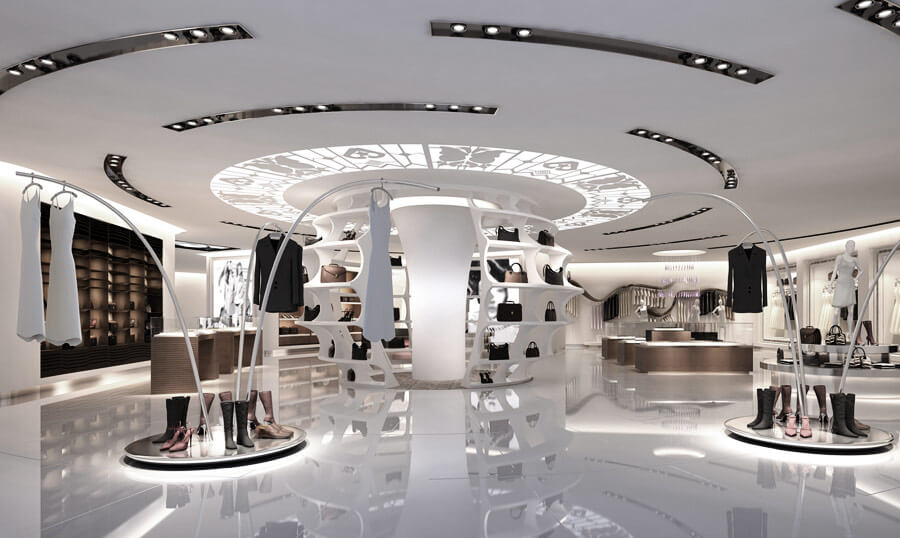In the ever-evolving landscape of retail, the role of design has become increasingly crucial. From captivating layouts to immersive experiences, retail design solutions play a pivotal role in shaping the success of businesses. In this article, we delve into the intricacies of retail design, exploring its elements, tailoring it to customer experiences, embracing sustainability, staying abreast of trends, overcoming challenges, and glimpsing into the future.
I. Introduction
Definition of Retail Design Solutions
Retail design solutions encompass a range of strategies aimed at optimizing the visual and spatial elements of retail spaces. It involves creating an environment that not only showcases products but also engages and captivates customers.
Importance of Effective Retail Design
The significance of effective retail design cannot be overstated. It goes beyond aesthetics, influencing customer behavior, brand perception, and ultimately, sales. A well-designed retail space can leave a lasting impression and foster customer loyalty.
II. Elements of Successful Retail Design
Layout and Space Planning
The layout of a retail space plays a pivotal role in guiding customer flow and optimizing product visibility. Strategic space planning ensures a seamless and enjoyable shopping experience.
Visual Merchandising
Visual merchandising involves the art of presenting products in an enticing manner. From window displays to in-store arrangements, it’s a powerful tool for capturing attention and driving sales.
Lighting and Ambiance
The right lighting can transform the ambiance of a store, influencing mood and customer perception. Thoughtful lighting design enhances the overall shopping experience.
Signage and Wayfinding
Clear signage and effective wayfinding are essential for guiding customers through the store. It minimizes confusion and frustration, contributing to a positive customer journey.
III. Tailoring Design to Customer Experience
Understanding Target Audience
Successful retail design starts with a deep understanding of the target audience. By knowing the preferences and expectations of customers, designers can create spaces that resonate with them.
Creating a Unique Brand Identity
Retail spaces should reflect the unique identity of the brand. Consistent branding across physical and digital platforms strengthens brand recognition and customer trust.
Incorporating Technology
In the digital age, technology plays a vital role in retail. From interactive displays to augmented reality, integrating technology into design can enhance customer engagement.
IV. Sustainable Retail Design
Eco-Friendly Materials
The use of eco-friendly materials in retail design not only aligns with environmental values but also appeals to an increasingly eco-conscious consumer base.
Energy Efficiency
Implementing energy-efficient solutions reduces the environmental impact of retail spaces while also contributing to cost savings for businesses.
Waste Reduction Strategies
Adopting strategies to minimize waste, such as recycling and upcycling, demonstrates a commitment to sustainability and resonates with environmentally conscious consumers.
V. Trends in Retail Design
Interactive Displays
Engaging customers through interactive displays adds a dynamic element to retail spaces. Touchscreen kiosks and virtual try-on experiences are becoming increasingly popular.
Omnichannel Integration
Seamless integration between online and offline channels provides customers with a cohesive and convenient shopping experience, blurring the lines between physical and digital retail.
Pop-Up Stores
The temporary and exclusive nature of pop-up stores creates a sense of urgency and excitement, driving foot traffic and generating buzz around a brand or product.
VI. Challenges in Retail Design
Balancing Aesthetics and Functionality
Finding the right balance between aesthetic appeal and functional efficiency is a common challenge in retail design. A visually stunning space must also cater to the practical needs of both customers and staff.
Adapting to Changing Consumer Behavior
Consumer behavior is constantly evolving, influenced by societal trends and technological advancements. Retail designers must stay agile and adapt their strategies to meet shifting consumer expectations.
Budget Constraints
Designing a retail space within budgetary constraints requires creative solutions. Prioritizing key elements and exploring cost-effective materials and technologies can help overcome financial limitations.
VII. Case Studies
Successful Retail Design Implementations
Examining successful retail design implementations provides valuable insights into strategies that resonate with customers and contribute to business success.
Lessons Learned from Failures
Analyzing failures in retail design offers valuable lessons. Understanding where others went wrong can help designers avoid similar pitfalls.
VIII. The Future of Retail Design
Technological Advancements
Emerging technologies such as augmented reality, virtual reality, and artificial intelligence are poised to revolutionize the retail landscape, offering new possibilities for immersive customer experiences.
Personalized Shopping Experiences
The future of retail design involves personalized experiences tailored to individual preferences. Data-driven insights will play a crucial role in creating hyper-personalized shopping journeys.
Integration of Virtual Reality
Virtual reality has the potential to transform the way customers interact with products. Virtual showrooms and immersive experiences will become integral to the retail design landscape.
Conclusion
In conclusion, retail design solutions are dynamic and multifaceted, shaping the way customers experience and interact with brands. From the layout and visual elements to embracing sustainability and staying ahead of trends, effective retail design is a powerful tool for businesses. As technology continues to advance, the future promises even more exciting possibilities for creating memorable and immersive retail spaces.

